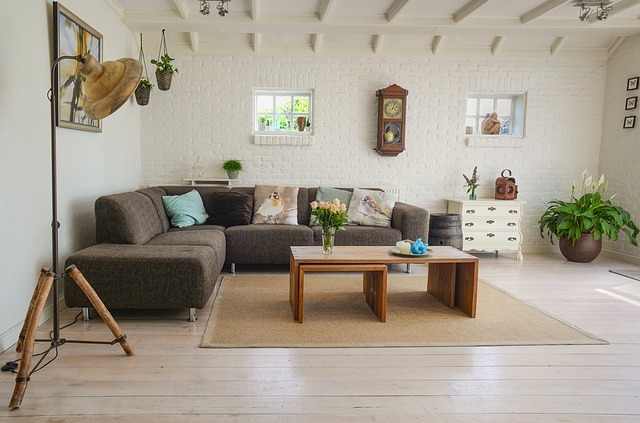Is your home in need of an update that brings new life to otherwise flat and one-dimensional spaces? There are a variety of creative and easily-implemented solutions that can add texture your home, improving the overall depth and character of the spaces where you live and work. 
Mixing Paint Color and Texture
The most common method of adding texture involves using different paint colors and tones to accentuate a room’s inherent architectural features. Using contrasting or accent colors in limited sections of a room can help break up the monotony of a space and draw the eye to key areas of interest. Textured applications can add additional depth and contrast, particularly when several paint techniques are used throughout a room. Silica sand, joint compounds and other paint additives are often used to give painted walls dimension or to create new design elements. Techniques that use sand in the painting process create a gritty and extra-bodied finish. Combing and rag rolling techniques can be used to shape paint and create custom design elements. An additional benefit of textured applications is that said and joint compounds help to cover up damaged areas.
Using Woodgrain in Design Features
Many contemporary designs rely on woodgrain as a way of adding texture to a room. When incorporated in wall designs and decorative elements, woodgrain can go a long way in breaking up the monotony of an otherwise drab space. Wood tells a story and adds a naturalness and comfort to design aesthetics. Whether you decide to use reclaimed wood or are going for a more polished and refined look, there are many options for application. Wood can be used to cover accent walls and create unique floating shelving solutions. Consider layering wood and using contrasting hues in redesigning a space. Reclaimed wood, which is often scarred or marked from use, can help to imbue a room with a sense of history, and makes for a great conversation piece.
Incorporating Leather Elements
A critical but often overlooked technique for achieving improved texture in your design involves using leather furniture elements. Leather furniture is durable, easy to maintain, and adds a natural richness to otherwise drab rooms. The European Leather Gallery offers a wide range of high-end solutions to meet your home needs, including leather reclining and stationary sofas, sectionals, and office chairs. Ekornes Stressless Recliners are functional, comfortable, and reflect a refined and elegant design aesthetic. Leather furniture can be used with great flexibility in home design, as the texture of leather compliments and enhances a wide variety of design aesthetics. The rich hues of leather furniture help to soften starker and more minimalist rooms, and leather’s clean lines and finish can add a feeling of luxury to living rooms and office spaces. European Leather Gallery is an industry leader in creative and comfortable leather solutions designed to meet your needs.
I’m a 20-something stay-at-home mother and wife. I have an amazing husband, a beautiful daughter, two loving dogs, and a lazy cat. I wouldn’t change my life for anything! I love to read, listen to music, cook and blog!

Speak Your Mind